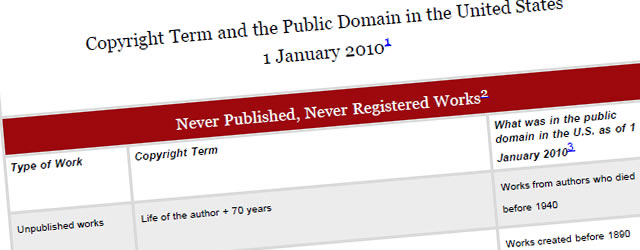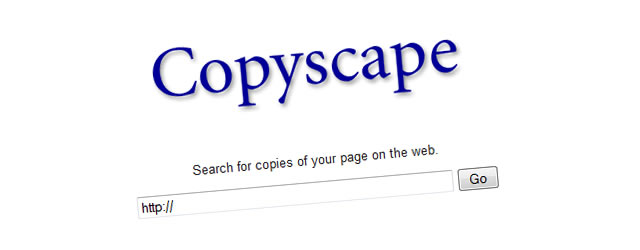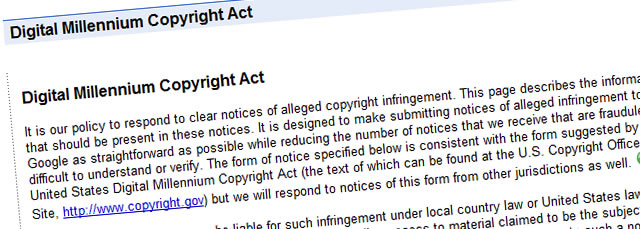For those that don’t already know, autoblogging is much like it sounds. It is a term that was coined around 2006 to mean that a computer can do the job of a human blogger automatically, by using robots to go to the web and acquire content to be published on the owners site.
Sounds OK in principle and could be argued that in a way such products as Google News is an autoblog, because all that it does is listen to all of the RSS feeds from around the planet and then re-link them on their own page.
However, this is usually where the comparison stops. Most autobloggers (be that the application or the blog owner) do not repeat the information verbatim but slightly change it to make it look like their own content, and then pack the rest of the page with advertising.
For example I have made a plugin called Share and Follow that is available through the WordPress Plugin Repository and from my own website. Yet if I start looking a little harder for reviews and things like that, I will find a massive number of sites that have taken parts of the readme.txt and placed it on their own site, where they offer nothing more than a link back to wordpress and a bunch of advertising. Useless to anybody but the auto-blog owner as they can charge per page impression via advertising.
There is even an autoblog that has chosen the niche of ‘errors’, so if someone is looking for help on an error, they can end up at a site that has no help but just a bunch of links to keywords about errors. This one I personally find annoying as they are suggesting to the world that there are issues or problems where there are none, and are also making money from advertising on it.
Others throughout the web are equally as angry as their full articles or blog posts are being harvested, sometimes verbatim repeated on a secondary site with yet again another set of advertising around it. I can safely say that popular sites like this one, SpeckyBoy, will have all of it’s articles ‘stolen’ and used else where.
Why do people Autoblog?
There seems to be only a handful or reasons to autoblog:
- To be able to have many blogs running at the same time.
- To get higher SEO, as Google/yahoo et al believe that a site with regularly updated content is more valuable than others.
- To get more advertising space.
- They are too lazy or uncreative to make their own content.
- They don’t want to employ real people and cut in to their advertising profits.
- To get backlinks to their site from an un-suspecting blog owner, in the hope of increasing their PageRank.
- To make their company or group look more important to their customers as they have all these great bloggers “working” for them.
Is Autoblogging legal?
One could easily argue that whatever content is placed on a site with a copyright on it, that copying that content would be a breach of copyrights. Yet we often are all guilty of opening a legal backdoor to anybody who wants to copy our content, that backdoor is of course our RSS (really simple syndication) feed.
By offering an RSS feed we are allowing anybody the legal right to copy our content.
There are some additional rules that are supposed to cover RSS, like:
- The content must not be changed from it’s original format
- All links must stay the same
- If you choose to put a copyright message on your RSS feed it should be adhered to
- Full attribution of the content must remain with the original Author
As we know, rules are meant to be broken and these rules are often completely ignored. We must also remember that rules are different throughout the web world. The web itself does not worry about boundaries, but the rule of law does.
So, for example currently in Holland it is 100% legal to download any content available on the web (even pirated movies on torrents, if you don’t watch them after download), but totally illegal to upload or re-transmit that content without prior agreement from the content owner. However in countries like America, it’s a Federal Offense to do any of that part of it without explicit agreement from the content owner.
The major point there being that different countries have different laws, and a clever autoblogger could host in a country that has loose copyright laws, thus allowing them more flexibility in what they publish, or in the ability for the law courts to actually take the autoblogger to court.
Would you try to take a Chinese or North Korean autoblogger to court if your based in the US?
As an example of RSS without copyrights, you can do what you like with Gov. Arnold Schwarzenegger’s XML RSS feed from Posterous, including taking the images as they are all there in the feed. Ironically here there is not an author listed, so you could not reference them, but you would have to link back to the site to remain good under the eyes of the law.
I am sure he would come and terminate your ass if you took a thing from the Office of the Governor site where there is no RSS feed.
When is Autoblogging not legal?
OK, forgetting for a moment that everyone can be in loose lawed countries, I’m going to focus on the General Laws that exist in most countries such as USA or any of the European countries for a moment.
Autoblogging is not legal at all when any of the following conditions are true:
- Ignoring explicit copyright condition on the RSS feed.
- Not recognizing the original author.
- Copying the images from the original post and putting them on the new site, when the images are not part of RSS.
- Not linking back the originator of the content.
- Taking any content from a site that does not have an RSS feed, and contains a copyright or implied copyrights.
- Transferring the RSS feed content into another language.
- Taking the full content from a site where the RSS feed is a summary content.
- Taking content or adapting content from a site without a Creative Commons, or Copy Left policy.
So for example it is legal to take (and re-write) from Wikipedia, but not if you don’t link back to them or at least provide the URL of the original source.
Is there such a thing as a good Autoblogger?
As you will see yourself from looking around the web that there are many blogs that are just vehicles for gaining advertising revenue, there are also many sites that are run with a White Hat attitude.
As in the example at the beginning of this article, Google News, it gets news from around the world in different languages and re-publish them on it’s news pages. This helps us all.
Here is another scenario of where autoblogging could be productive for the general public:
Lets imagine that we’re running a site that deals with Car Insurance. Quite a dull subject but needed by everyone. I feel it would be great if the owner of an Independent Brokerage, re-published news via RSS from all of the Insurance Companies, or Newspapers about Car Insurance, along with the standard content on their site and their own comparison engine for comparing or selling insurance. Using WordPress terminology, to autoblog other peoples news to the sidebar while creating their own content to the main blog.
Using this example of the sidebar for autoblogging, it would satisfy Google’s desire for regularly updated content and higher SEO, but as a concept would definitely cut into that advertising space that so many autobloggers want. After all, who wants traffic with no income? Certainly not the autobloggers.
The Autoblogging’s biggest drawback
Quite simply, autobloggers never create their own content. If everyone was going to autoblog then there would be an ever decreasing circle of content that we all see over and over again. The web would become a very boring place.
Protecting yourself from autobloggers

There are a few key ways to protect your content from autobloggers, or at least making it clear to the reader that the autoblog is not the origin of the content, you could:
- Setup your RSS feeds to be summary only, not full content of posts (this can have an adverse effect on your readership, as people may not click through).
- Add a copyright notice to your RSS feed. Something that allows your readers unhindered access to your feed, but does not allow for re-publishing without prior consent. Do make sure that you have targeted both your own country and international copyrights.
- Add more images to your content with watermarks on the images, so that you suggest to the reader that this content all came from elsewhere. It helps if the images are an essential part of the reading process, i.e. references to graphs or other visual tools.
- Add more video with buffers, headers and footers with adverting for your site.
- Use a “pro” account for your video footage that gives you the possibility to say where things can be embedded or not; i.e. on your site only.
Here are some useful copyrights resources:
- 10 Big Myths About Copyright Explained →
- Copyright Term and the Public Domain in the United States →
- Intelectual Property Laws by Country →
Finding out who is copying your posts

There are a number of ways to find out who is copying your content. My personal favorite at the moment is CopyScape.
As an example I wrote a nice article about why in my opinion Adobe Fireworks is better than the Photoshop/Illustrator combo as a web design product. As you can see from this link (my article via CopyScape), there are at the time of writing 5 places on the web where people have taken this content and made it their own, in some cases they have taken it verbatim and snapped up the images too.
Don’t forget that these people care so little for you that they will often also link back to your images in their posts so that they don’t have to pay anything to host it. This can cost you a whole lot more than just a day or two angry at them.
Dealing with duplicate content (the slow way)
Contact the site owner and demand in a polite way that they remove your content. You are in your rights to do that as the site owner or as the author of the article. So you don’t have to contact the blog you posted on to get them to take action if you are fuming mad already. Please note: most autobloggers don’t care.
You can also submit a spam request or duplicate page request to Google via the webmaster tools (I’m yet to find the equivalent for yahoo or bing, maybe somebody will comment with that info).
Read this page on DMCA (Digital Millennium Copyright Act) and report it to Google via a FAX or LETTER, not an email.
Do not expect quick action from these people or companies, and as most autobloggers work on their own servers and domains, there is not usually a governing body to help you.
At the other end of the scale Blogger.com spends many hours removing what it considers to be copyright infringement items as it does not want to be caught with it pants down in a position where they hold the legal responsibility. So if you complain to them when you see duplicate content on a Blogger site, they will work damn quickly to remove it, often without the knowledge of the owner of the blog.
But there are other ways to get back at these people much quicker.
Hitting back at the autobloggers where it hurts… in their pocket
The best way to get back at the autobloggers is to hit them in their pocket. Most autoblogger websites use Adsense to sell the advertising space to Google to populate, as no autoblogger wants the hassle of managing their own advertising space, after all they are lazy people in the first place.
Google AdSense has a Terms of Service that they must uphold, where they own very little responsibility with the DMCA, so it is much quicker to access help through this route.
All you need to do to get Google’s ear is to click on the “Ads by Google” link and it will take you to a page owned by Google with a title at the bottom of the page saying “Report a policy violation regarding the site or ads you just saw“, from the drop-down list choose websites and select from the possible complaints. You can tell them exactly that this is duplicate content and that it is only there for the purpose of selling adverting.
One of the many Google AdSense terms and condition is “Google ads, search boxes or search results may not be: Placed on pages published specifically for the purpose of showing ads.”
See here for the rest of the policies: Google AdSense Program Policies.
Search engine responsibilities, do they do enough to combat this?
Any good SEO person worth their salt will tell you that Google recognizes duplicate content and will mark down those sites in the search engine rankings. Remember the old adage “Content is King“.
Well, they will also tell you that regularly updated sites will place higher in the search engine rankings as they are considered to be more active than others.
It seems that the balance of power there is in the hands of the sites that regularly update their content, be it copied or not.
In my mind this is a shameful state of affairs as any Search Engine should be able to work out who came first and link to that one, or put that one at the top of their listing, not the autobloggers site.
In my opinion, regular offenders (say more that 2 articles or blog posts with legitimate complaints), should be removed from the search engine rankings completely except for the contact page of that site, where sites that do not have a contact page are removed completely from the registers.
If the autobloggers cannot benefit from this activity, they will move on to another get rich quick scheme.
